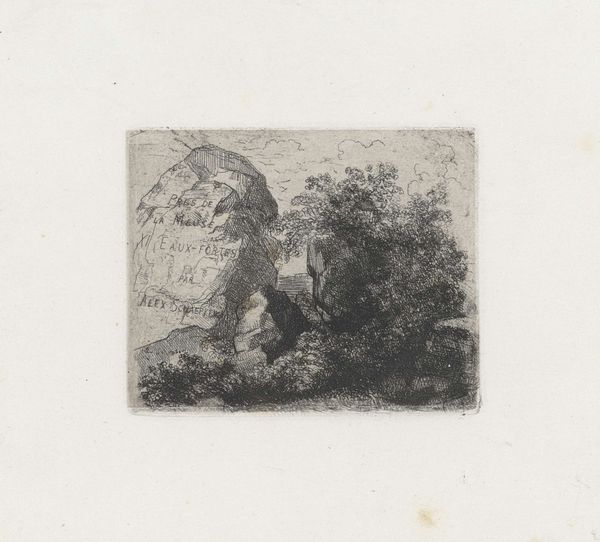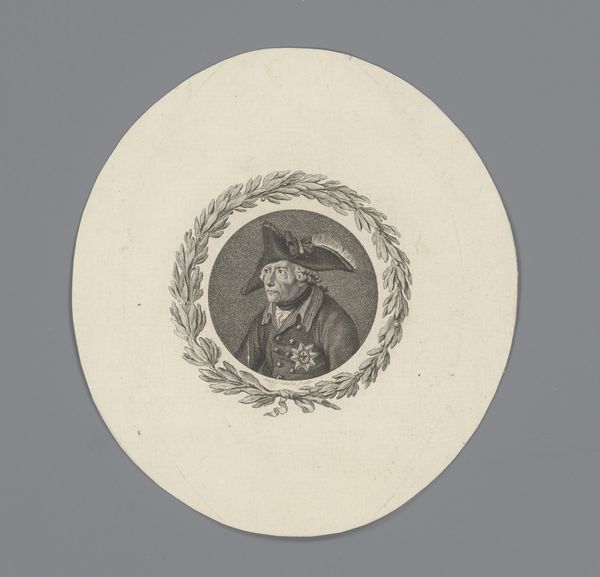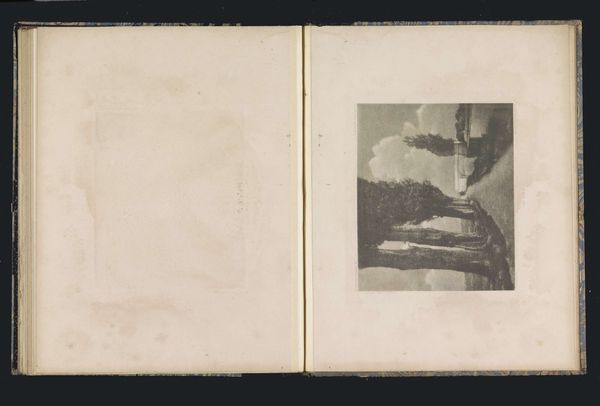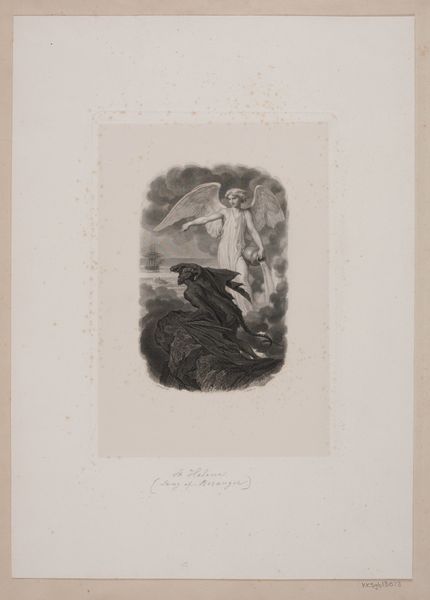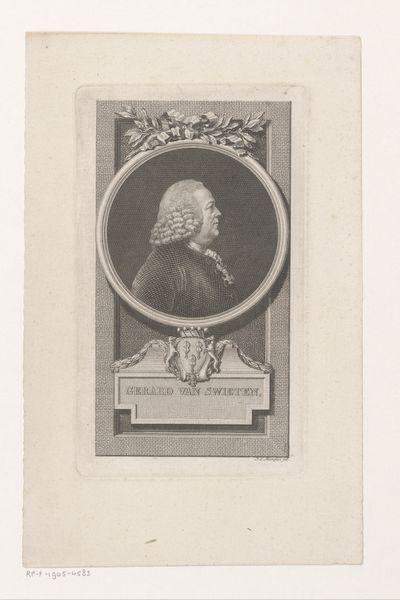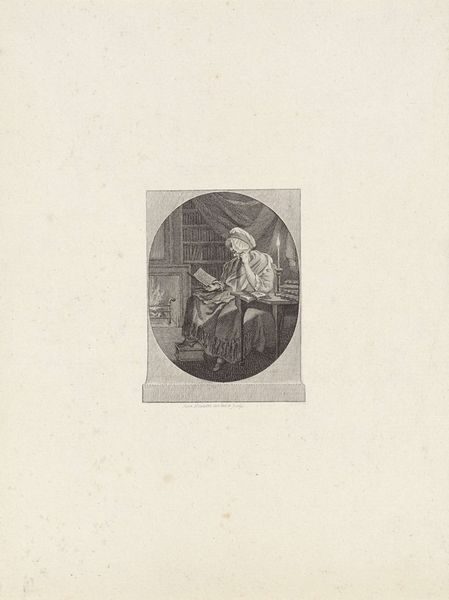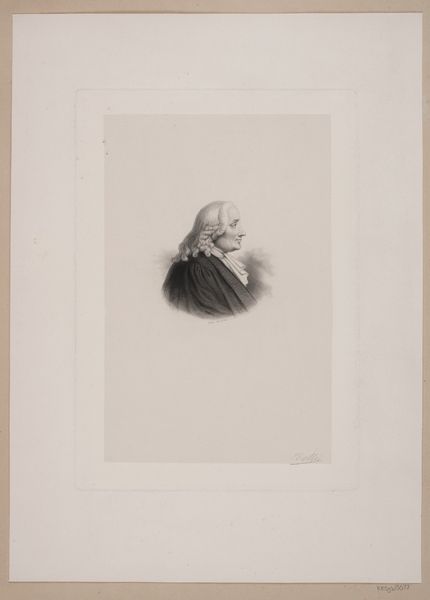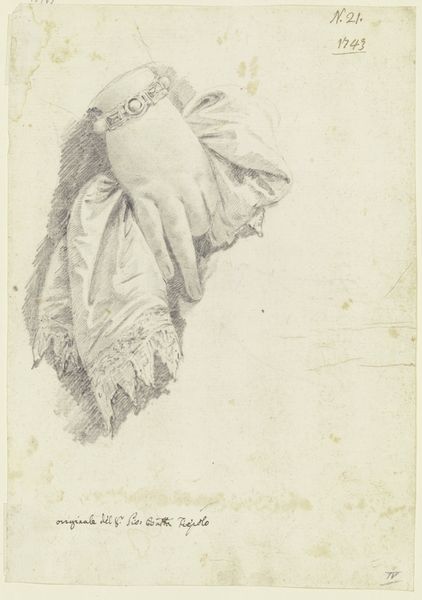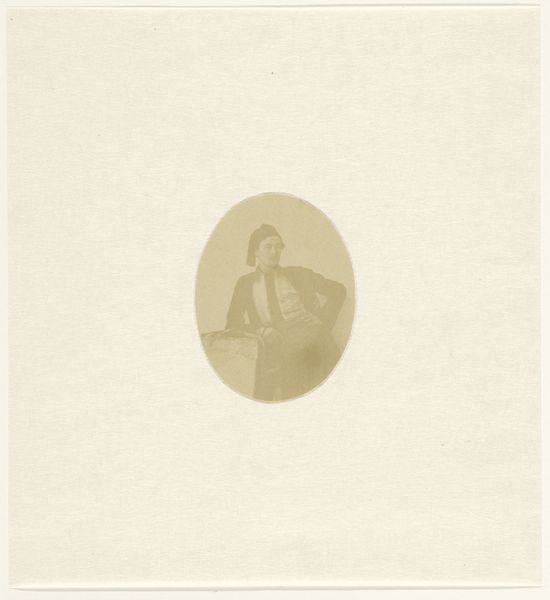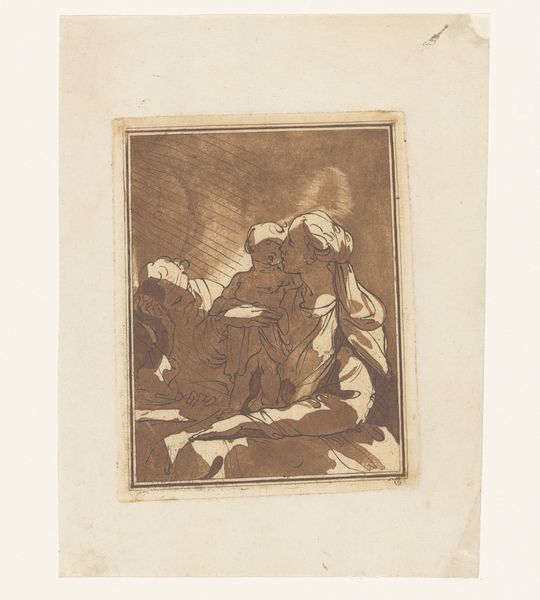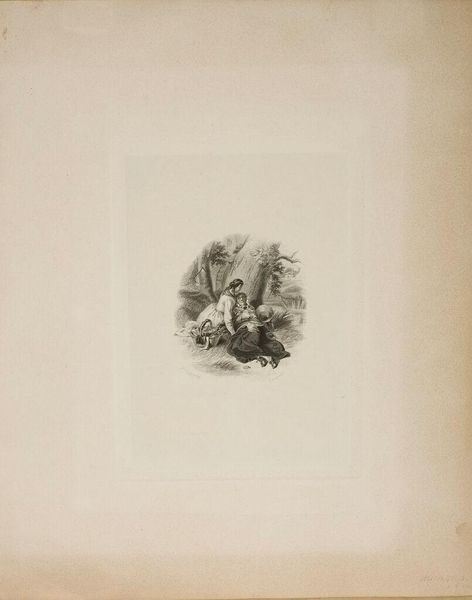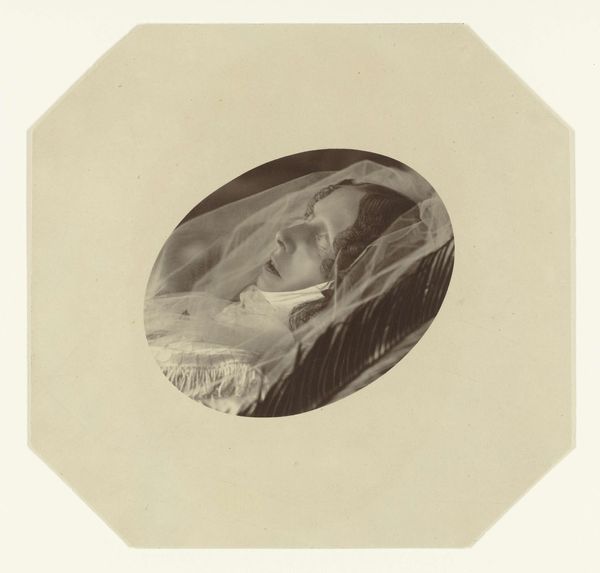
drawing, engraving
#
portrait
#
pencil drawn
#
drawing
#
neoclacissism
#
aged paper
#
toned paper
#
light pencil work
#
pencil sketch
#
old engraving style
#
personal sketchbook
#
ink colored
#
sketchbook drawing
#
sketchbook art
#
engraving
Dimensions: height 80 mm, width 75 mm
Copyright: Rijks Museum: Open Domain
Editor: This is a fascinating portrait: "Portret van Magdalena Adriana van Haren" created around 1794-1800 by François Gonord. It appears to be a drawing or engraving, perhaps in pencil, on aged paper. I'm struck by the level of detail achieved with such delicate lines. What draws your attention in this piece? Curator: I'm immediately drawn to the materials and process of production. The engraving itself speaks volumes about the means of circulating images and ideas during the late 18th century. This wasn't just art; it was a commodity produced by skilled labor. What do you think the choice of engraving, rather than painting, tells us about the intended audience or purpose? Editor: Perhaps it was a more accessible format for a wider audience? It’s certainly more reproducible than a unique painting. Were engravings like this common at the time? Curator: Exactly. Engravings allowed for wider dissemination of portraits beyond the elite who could afford painted commissions. They become objects of consumption. Note also the paper itself – its aging adds another layer. The fading and discoloration, are these accidental or intrinsic to the artist’s purpose? How does this inform your reading? Editor: That’s interesting – the 'imperfection' becomes part of the story. The artist had to make a very deliberate choice regarding the paper and other consumable materials used. It really highlights how even 'high art' relies on labor, trade and accessibility. I never considered it that deeply. Curator: Precisely! And considering how fashion dictated a highly crafted, artificial look at the time, the means by which the art was produced brings into sharp focus the social expectations of women’s fashion. Editor: Thanks, I am viewing this artwork through an entirely different lens now! Curator: My pleasure! Considering the historical context and production process gives it such a deeper meaning.
Comments
No comments
Be the first to comment and join the conversation on the ultimate creative platform.
